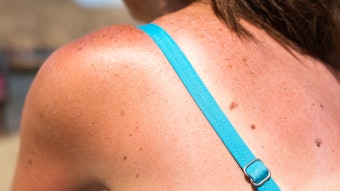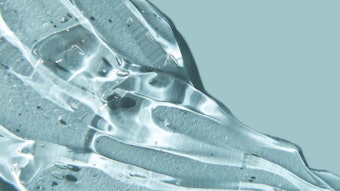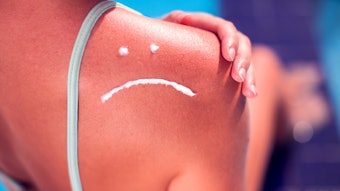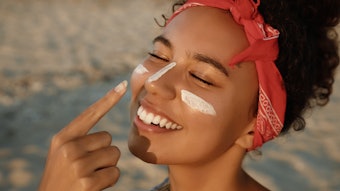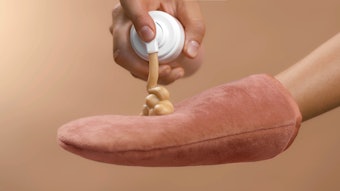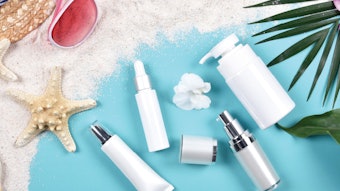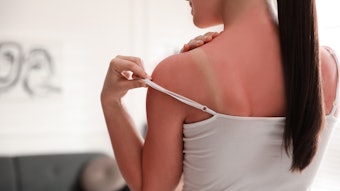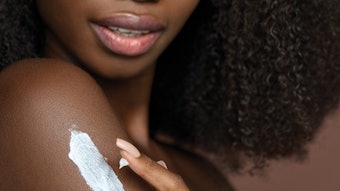
Consumers are understanding how important sun protection is thanks to all the information that has been coming to light. Whether they are scared of skin cancer or aging, consumers are getting more serious about their sunscreen than ever before. However, there are still a lot of questions about the types of sunscreens to use as well as sun care tips about applying sunscreen.. That's why Skin Inc. reached out to Chris Hislop, contributing writer for IMPACT Melanoma.
What is the Difference Between Chemical and Physical Sunscreen?
Chris Hislop (CH): When you apply chemical sunscreens, they absorb into the skin. The idea is that when the UV rays hit the skin, they are absorbed into the skin. Thus, the chemical sunscreen acts as a chemical filter. When it does that, it converts the rays to heat and then releases them from the body. With chemical sunscreens, you need to apply them at least 15 minutes before you go outside. They are actually used more when people are active outdoors, particularly around water when you’re swimming or if you’re sweating. They need to be reapplied every two hours. We never believe that a sunscreen is completely waterproof, so we make the suggestion to reapply after water activities. Chemical sunscreens block both UVA and UVB rays, which is what you’re looking for.
There’s a lot of controversy right now with chemical blockers because we know that they are absorbed into the skin and some of those chemicals can be harmful. The ones we are most concerned about are oxybenzones–a synthetic hormone which has been used in a vast amount of chemical sunscreens on the market. What we know from the FDA, who are conducting their own studies currently on chemical sunscreen, is that they have high rates of absorption into the body’s cells. What we don’t know is what difference that makes, and what, if any, harm it may be causing. The FDA will release the results at some point, which will educate us further on the long-term effects of the sunscreen, but for right now, the recommendation is to use the sunscreen because it's safer than not wearing any.
Physical sunscreen has blockers that sit on the skin. There’s no absorption. The sun rays reflect off of the blockers. The main ingredients in these sunscreens are zinc and titanium. There are really no known issues with either of those with regard to humans. There are studies that show that these natural sunscreens are harmful to coral reefs however, which obviously effects some water life. They last longer than chemical sunscreens, but they still do need to be reapplied if you go swimming. Basically, if you’re wet, you’re always going to need to reapply as there’s no surefire guarantee that “waterproof” is in fact 100% waterproof. Physical sunscreens are also UVA and UVB broad spectrum sunscreens. That’s what you’re looking for.
Is Sunscreen Universal, or Do Different Clients Need Different Sunscreens?
CH: Sunscreen is a personal choice. Some people have irritations that stem from the use of sunscreen. This may have to do with fillers in the sunscreen itself, not necessarily the titanium, zinc or chemical blockers. We want young children to wear more natural sunscreens which contain less fillers which can reduce potential irritants. We always say that everyone should wear sunscreen, and we won’t stop! If one sunscreen is bothering you, try a different type as they’re not all the same and maybe there’s a better solution for your specific skin type. While skin cancer and melanoma rates are proven to be highest in Caucasians, sunscreen is something that every skin tone can benefit from.
What Tips Can Spas Provide Their Clients for General Sun Care Beyond Sunscreen Usage?
CH: Sunscreen is only one tool in protecting yourself from the sun. Consider wearing hats with wide brims, sunglasses and protective clothing on parts of the body that aren’t protected by sunscreen. Also, seek shade during peak hours of the day (typically 11am – 2pm) when the sun is beating down hardest.
The real issue is, if you don’t like to wear sunscreen, wear protective clothing. If you’re skin isn’t’ exposed, you’re not exposing yourself to the harm of skin cancer.
What Ingredients Should Spas Look for Sunscreens to Have and Which Ones Should They Avoid?
CH: Right now zinc and titanium are always safe. The chemicals you should avoid are the oxybenzones mentioned above. There are concerns that these chemicals are a synthetic hormone that may have some impact on nursing mothers in particular. While there are other chemicals present in sunscreens, we currently have no research that suggests they should be totally avoided.
What has Changed in Sun Care That is Significant for Spa Professionals to Know and Understand?
CH: The biggest issue that spa providers can share with their clients is that there is no such thing as a safe tan. “Ban the burn” is a mantra that they should talk about regularly. Sun and burn is the leading cause for skin cancer and melanoma diagnoses. That’s the most important issue–avoiding buns. The other piece is to avoid tanning beds at all costs. We have evidence that tanning beds are carcinogenic and currently 19 states plus the District of Columbia have banned tanning beds from kids under the age of 18.
As little as one sunburn can increase your skin cancer risk because any time your skin changes color, it impacts the cell’s DNA which is a major skin cancer predictor. Until the FDA is able to show otherwise, as of right now, wearing sunscreen is far safer than getting a burn.
If you have any questions at all, or would like to talk about sun protective skincare habits, please visit us at www.impactmelanoma.org.

